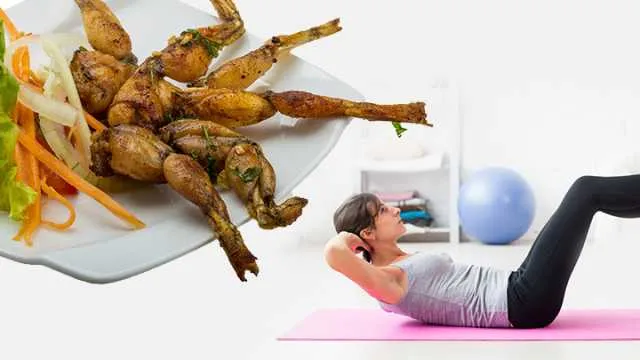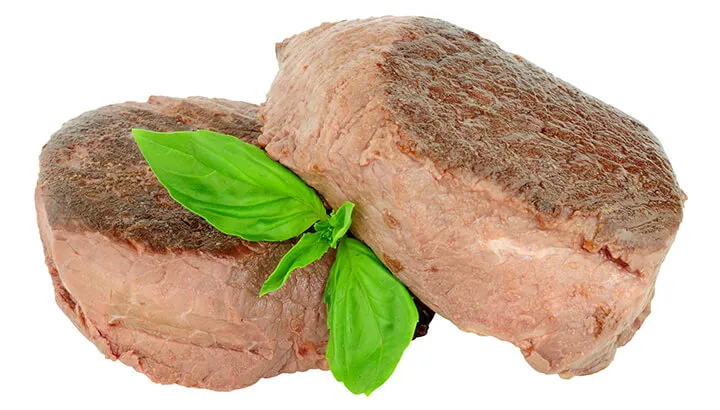
- Share on Facebook96
- Share on Pinterest
- Share on Twitter
In the Western world, many people who eat meat stick to the basic, conventional varieties. I’m talking about chicken, beef, pork, fish and a turkey on Thanksgiving — that’s as adventurous as most omnivores get around here. These meats certainly have their health benefits (especially when they’re organic, grass-fed and raised in humane conditions), and there’s no denying that they’re delicious.
If you’re looking to get a bit more creative with your meat selection, however, there are many other paleo meats to try. One which you may not have considered eating is frog legs.
1. Frog legs
While some people may be thoroughly disgusted by the idea of eating frog, if you get past the initial “ick factor,” you may find that you enjoy them. This very lean meat is sometimes compared to chicken, so if you’re a chicken lover, it may not be a bad idea to give them a try. If you’re not convinced, here are five benefits of eating frog legs:
- High in protein
- Very low in fat
- A great source of heart and brain healthy omega-3 fatty acids
- Full of vitamins, including vitamin A, vitamin B6, vitamin B12, vitamin D, vitamin E and a little bit of vitamin K
- Rich in minerals, including potassium (and a lot of it), iron, phosphorus, zinc, copper, selenium and a little bit of calcium
Note: If you plan on cooking up some frog legs, make sure you get them from a trusted source that raises frogs in an environment free of toxicity. Frogs that live around non-organic farms and industrial areas that leach chemicals may be hazardous to your health.
Frog legs not your cup of tea (plate of frog)? Consider trying one of these eight other paleo meats. Just remember, always go grass-fed and know your source. You want animals raised in humane conditions and fed their natural diet. There is nothing natural about factory farms.
2. Bison
If you love lean cuts of beef, you may really enjoy bison. Bison tastes much like beef but it is lower in fat. It’s a great source of protein, and also contains a wealth of vitamins and minerals, including vitamin B12, iron and zinc. On top of that, grass-fed bison contains a good amount of omega-3 fatty acids. Try a bison steak or a bison burger next time you fire up the grill!
3. Elk

Another great lean red meat is elk. Elk is a very tender game meat, and has the benefit of a high amount of protein with much less fat than beef. This meat also contains calcium, potassium, phosphorus and iron, to name just a few of the many nutrients. If you like venison, give elk a try.
4. Goat
Many nations around the world, including India, frequently eat goat meat, also known as mutton. In the West, however, it’s not as common. Goat has a stronger flavor that goes well in curries and other spiced meat dishes. It’s high in protein, healthy fats, B-vitamins, choline, niacin, selenium and more. This meat is a bit tougher, so you’ll want to use a low and slow cooking method.
5. Ostrich

This is one of my personal favorites. Ostrich meat is delicious. Although an ostrich is obviously a bird, it’s meat is more like a lean, red meat than other poultry. It’s high in protein, low in fat and contains a wealth of vitamins and minerals. Try an ostrich burger or make some ostrich steak kebabs. Just make sure not to overcook it.
6. Emu
Native to Australia, an emu is much like an ostrich. Like ostrich meat, the meat of the emu is also a lean red meat high in protein, low in fat and teeming with nutrients including vitamin B12, vitamin C and iron. Depending on what’s more available in your area, emu makes a great alternative to ostrich meat.
7. Rattlesnake
Rattlesnake meat is high in protein, low in fat and contains nutrients such as vitamin C, potassium and manganese. If you’d like to try this exotic meat, make sure to know your source well, as it is sometimes not as well regulated as other meats in this part of the world. Also, make sure you cook it thoroughly. Rattlesnake hot dogs, anyone?
8. Rabbit
Some of you may be familiar with coney stew, but rabbit is not a commonly eaten meat nowadays. However, it’s a mild-tasting white meat which contains a high amount of digestible protein, a low amount of fat and a high amount of calcium and phosphorus. If you can be okay with eating something this cute, it may become your new favorite.
9. Crickets

If you’re looking for a unique and outside-the-box source of sustainable protein, give crickets a try! These critters are high in lean protein, and also contain omega-3 fatty acids, iron, calcium and vitamin B12. They can be savory or sweet — chocolate covered crickets are a delicacy in some parts of the world. You can even find them in powder form, for a protein-packed smoothie.
What’s your favorite paleo meat? How do you prepare it?

— Tanya Mead
- Share on Facebook96
- Share on Pinterest
- Share on Twitter

